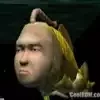Here is why:
The US is the richest country in the world. It is able to have its population growth needs met by immigration inflow from around the world.
The EU is the second richest entity in the world. It is able to have its population growth needs met barely by constant expansion and high migrant inflow rates with mixed results.
China is the third biggest economy in the world after the US and EU, it is suffering from population decline pulling down on its economic growth numbers. Over time we can expect the decline in population to result in the stagnation of the Chinese economy once things get bad enough.
Japan is the 5th biggest economy in the world, its economy is stagnant due to its declining population, with Japan expected to weaken further and fall further due to its continually declining population.
India is the 6th biggest economy in the world, its economy is growing along with its population for the next few decades.
We can see a pattern of nation states failing due to population decline over time. The easiest and most viable way to fix this problem in the long term is for all of these nation states to open up their borders to allow for enough people to move in to continue to grow their economies in the future. The average nation state can no longer survive with guarded and controlled borders as there are not enough well educated people willing to move into every single territory in the world.
As entire nation states fail and fall into consistent decline over time, the only way left to survive would be to open up the borders and allow people to move in freely to set up shop and pay taxes, with the best businesses and workers thriving irrespective of where they come from.
Open borders are the survival tool of nation states that need constant persistent growth. Closed borders are the survival tool of nation states that are in a state of high stability and control.
While Russia today does not have open borders, over the years it has continued to make it easier to move to Russia for non-Russians. In this manner we can expect the easing up of movement restrictions all over the world as the requirement for human resources outgrows the desire for national homogeneity and border security.
The richer nation state with a declining population eases up movement restrictions on its closest neighbor with a positive population growth rate, allowing for the additional humans born to be transferred to a negative population growth region while economic benefits are shifted along to the positive population growth poorer territory.
Japan is already easing immigration rules to make it easier for outsiders to move in. While the easing of immigration rules moves at a glacial pace, the long term effect is the same, the borders get ever closer to opening up over time.
The US has also gone on to pass more policies that make it easier for immigrants to move into the US and become US citizens. We see the entire world in this manner moving further towards semi-open borders and almost guaranteed to move towards open borders altogether by the end of the century.
Canada has taken the most risk with such behavior, allowing for more than 500,000 immigrants to move into Canada per year. Raising its population by about 1.5% every year. While the native populations of many nations may be against immigration, the governments of these countries find out the hard way that the only way for the country to survive is to bring in more immigrants and to ease up methods of immigrating over time, as the number of immigrants needed increases, while the availability of high skilled immigrants decreases.
South Korea has also gone on to make it easier for immigrants to work in South Korea. Once again acting as another example of borders becoming easier to travel through for the people of the world.
The idea of the Visa itself might become obsolete one day the way things are going.
As most of the nation states of the world continue to stagnate and decline, they have no choice but to open up restrictions to outsiders further in the name of accruing more business, labor, trade, and funds over time. A nation may only restrict and maintain barriers when it is doing well enough as to keep growing at its current trajectory.
None of the nation states today are showing signs of being able to maintain such relentless growth where they accrue no slowing down over time.
We can expect Russia to open up to immigration from Central Asia rather than letting itself fall into a perpetual decline from which it cannot recover. Similarly we can expect China to open itself up to easy immigration from Africa. Mongolia, and North Korea, rather than let itself fall into long term decline.
By the end of the day, if a nation state has to choose between making it easy for outsiders to move in, or to fall into decline and collapse, it will choose the former.
A nation state in its current iteration is like a company. The company exists in perpetuity in spite of who its employees are. The nation state like a company only ceases to exist when the nation state itself has failed from top to bottom to provide any meaningful value.
A nation state fails when it can no longer feed its people. A nation state fails when it can no longer provide safety and security to its citizens at the minimum level of guaranteeing safety from external threats in the form of other nation states or massive terrorist organizations. A nation state has failed when it cannot provide a better quality of life for the next generation that grows up within it.
A nation state in generally a strong enough entity that even an economic collapse does not end it at once. Venezuela and Syria today still proclaim themselves as independent nation states. Most countries will have to reach the extremes of being very old, declining in economy, and suffering from the loss of more than half their population, before we can expect them to have an open border policy.
The schenzen area is the biggest open border project in the world, with more than 25 members today and no true end point to how far it may choose to expand over time.
Looking at the long term, the most likely outcome is going to be open borders between countries within regions of the world. Such as an open border between USA-Canada-Mexico. Or an open border between All the European nations, or an open border across all of Africa.
Conclusion:
Open borders are the future. There is no way around it as current models of the nation state reach their limits for 95% of the world's nations. Immigration will continue to become easier over time especially in North America, South America, and East Asia.









Jump in the discussion.
No email address required.
Mfw
Jump in the discussion.
No email address required.
More options
Context